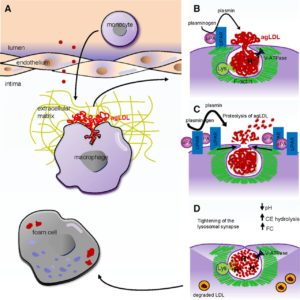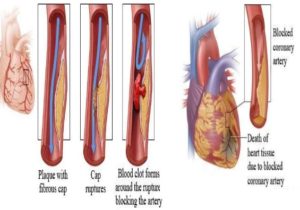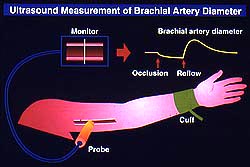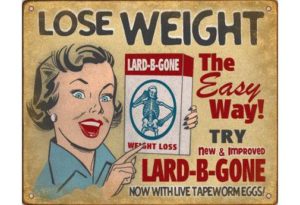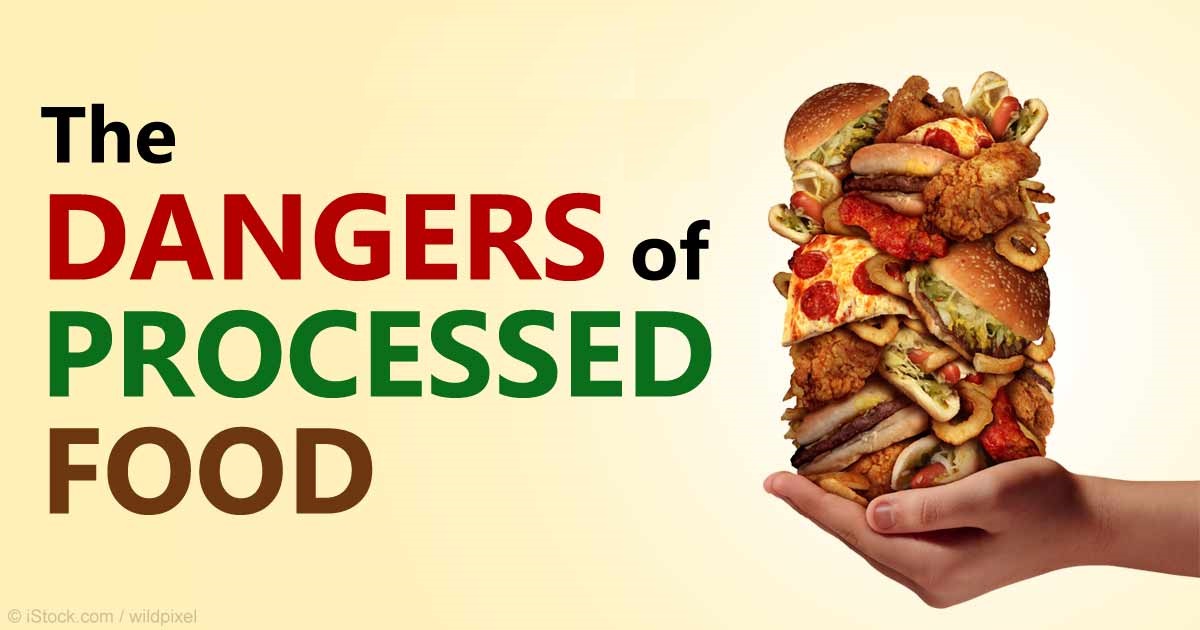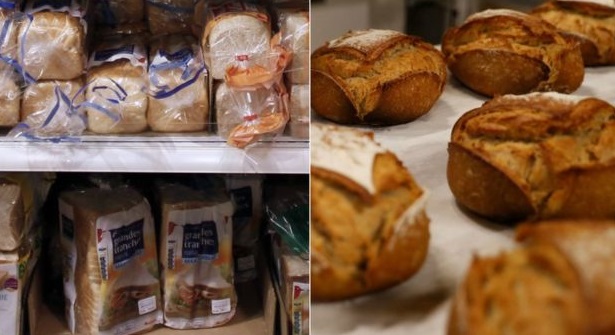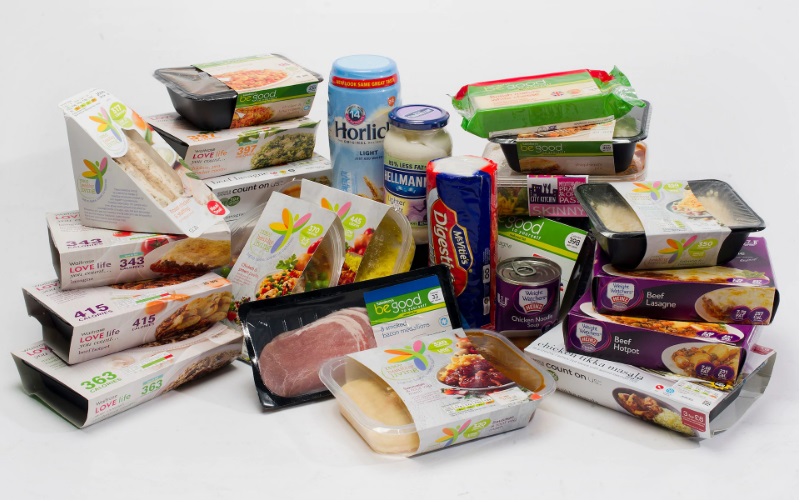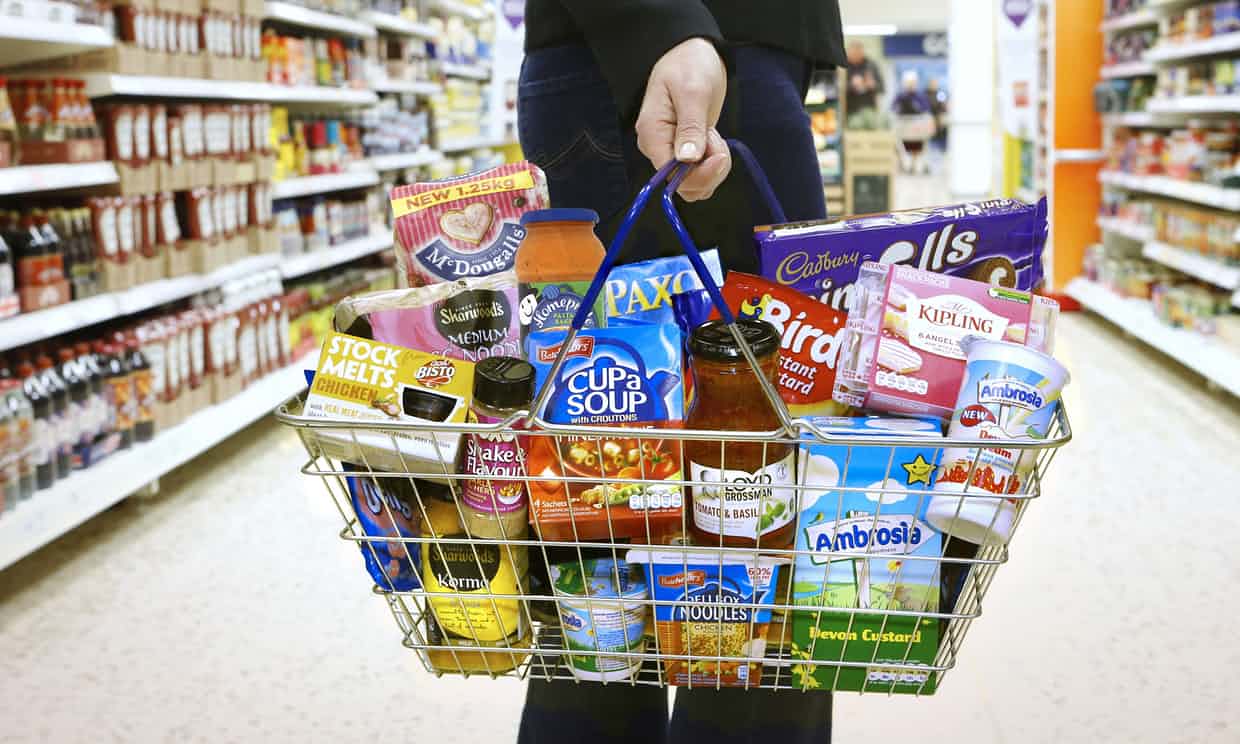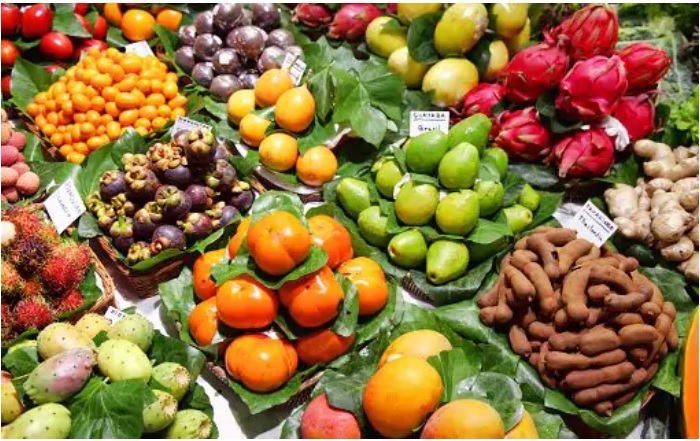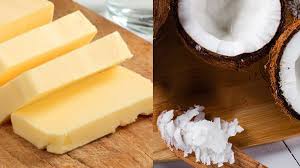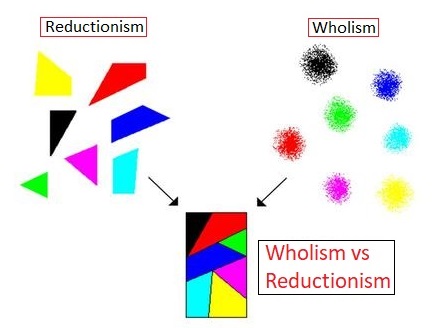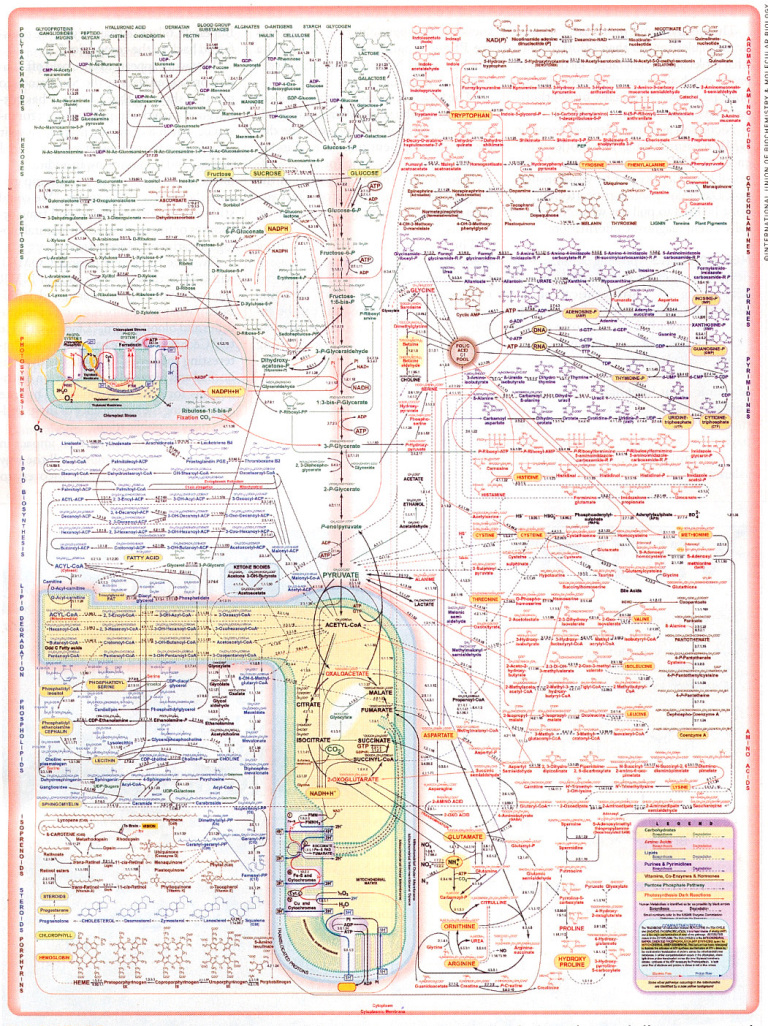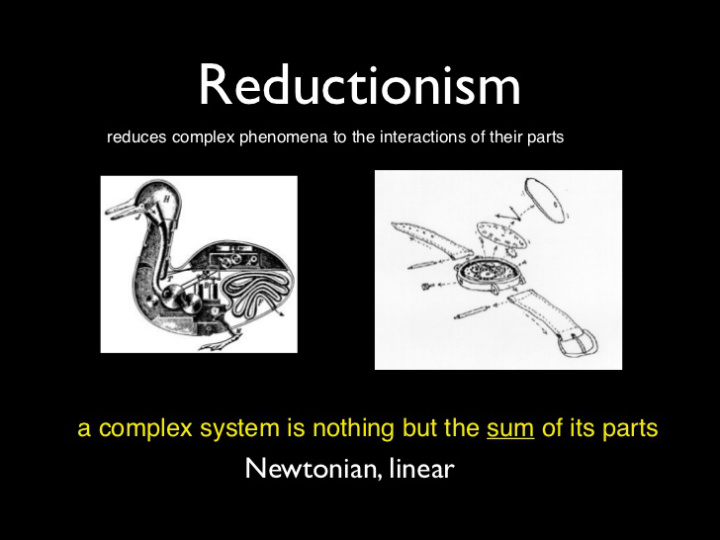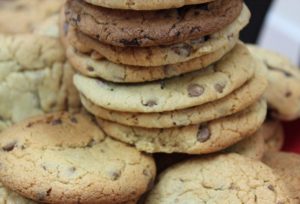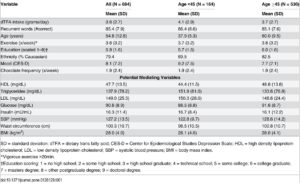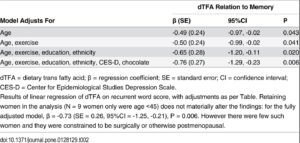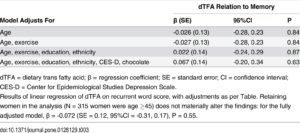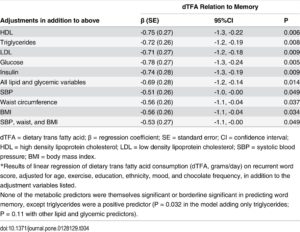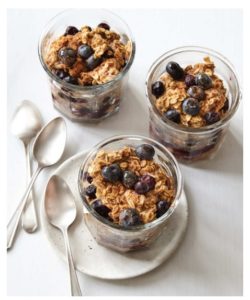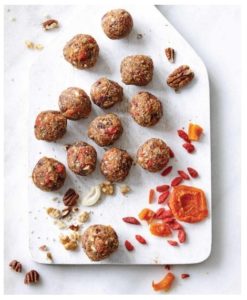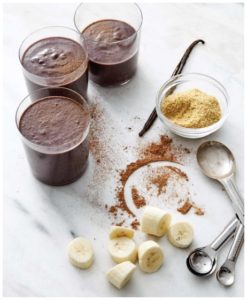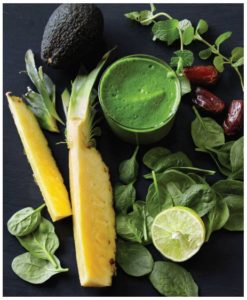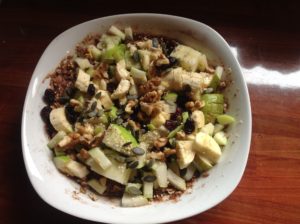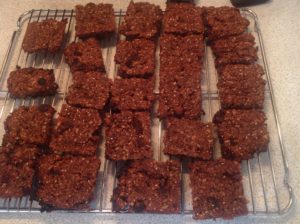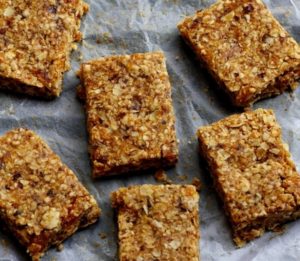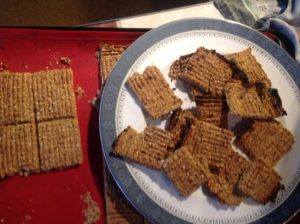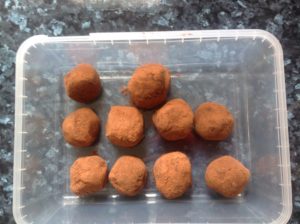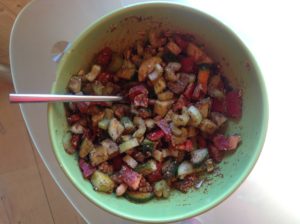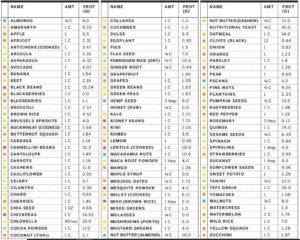
Yea, I know it’s a bit of an exaggeration to say that you shouldn’t buy food that comes in a packet, but you get the idea of where I’m going with this…’Toxins‘ in prepared foods – from tins of veg soup to loaves of bread – include substances with both familiar and unrecognisable names, but they can all be roughly classified into three groups:
- food additives
- artificial sweeteners, and
- artificial colours
This brief blog outlines just some of the ever-increasing list of those ingredients we might be wise to avoid. It may well help food manufacturers to make profits by producing cheap junk with unnaturally long shelf lives, but it’s our long-term health that eventually picks up the bill.
You know that I’m going to suggest that you avoid all animal products and added salt, oil and sugar as a starter; but even those who might still consider it okay to chew on a bit of cheese or chicken from time to time might be interested in looking through what follows. And it’s not that they are all equally harmful, nor that they are necessarily harmful when found naturally-occurring in whole plant foods; but when they are synthesised or concentrated and added to ‘improve’ something in the product, you’ve got to ask “improve for whom?” and “who benefits financially?”
Food additives
Aluminium (Aluminum to our American cousins): A preservative in some packaged foods that can cause cancer. 1
Azodicarbonamide: Used in bagels and buns. Can cause asthma. 2
BHA/BHT: A fat preservative, used in foods to extend shelf life. Linked to cancerous tumour growth. 3
Brominated vegetable oil (BVO): Maintains the suspension of flavour oils in soft drinks. Bromate is a poison and can cause organ damage and birth defects. Not required to be listed on food labels. 4
Butane (as BTHQ): Put in chicken nuggets, cheese crackers etc to keep them tasting fresh. A known carcinogen. 5
Carnauba wax: Used in chewing gums and to glaze certain foods. Can cause cancer and tumours. 6
Carrageenan: Stabilizer and thickening agent used in many prepared foods. Can cause ulcers and cancer. 7
Chlorine dioxide: Used in bleaching flour. Can cause tumours and hyperactivity in children. 8
Disodium inosinate & disodium guanylate: In snack foods. Contains MSG. 9
Enriched flour: Used in many snack foods. A refined starch that is made from toxic ingredients. 10
Gums (Stabilisers): These hydrocolloids are used in salad dressings etc and include guar, tragacanth, and xanthan gum. Xanthan gum is a common gum used in salad dressings and may trigger individual allergic reactions including headaches and gastrointestinal syndromes such as bloating and diarrhoea 11 . Tragacanth gum has been linked in the past to potential allergic reactions in certain individuals, especially those suffering from coeliac disease, because of its gluten residues. 12
Monosodium glutamate (MSG): Flavour enhancer that can cause headaches. Linked in animal studies to nerve damage, heart problems and seizures. 13
Olestra: Fat-like substance that is unabsorbed by the body. Used in place of natural fats in some snack foods. Can cause digestive problems, and also not healthy for the heart. 14
Paraben: Used to stop mould and yeast forming in foods. Can disrupt hormones in the body, and could be linked to breast cancer. 15
Polysorbate 60: A thickener that is used in baked goods. Can cause cancer in laboratory animals. 16
Potassium bromate: Added to breads to increase volume. Linked to cancer in humans. 17
Potassium/Sodium nitrate (E 249-252): Added to processed meats to stop bacterial growth.18
Propyl gallate: Added to fat-containing products. Found in meats, popcorn, soup mixes and frozen dinners. Linked to cancer in humans. 19
Propylene glycol: Better known as antifreeze. Thickens dairy products and salad dressing. Deemed ‘generally’ safe by FDA. 20
Recombinant Bovine Growth Hormone (rBGH): Geneticially-engineered version of natural growth hormone in cows. Boosts milk production in cows. Contains high levels of IGF-1, which is thought to cause various types of cancer. 21
Refined vegetable oil: Includes soybean oil, corn oil, safflower oil, canola oil, and peanut oil. High in omega-6 fats, which are thought to cause heart disease and cancer. 22
Sulphites: Used to keep prepared foods fresh. Can cause breathing difficulties in those sensitive to the ingredient. 23
Sodium benzoate: Used as a preservative in salad dressing and carbonated beverages. A known carcinogen and may cause damage to our DNA. 24
Sodium carboxymethyl cellulose: Used as a thickener in salad dressings. In high quantities it could cause cancer. 25
Artificial sweeteners
Acesulfame potassium (Ace-K): Used with other artificial sweeteners in diet sodas and ice cream. Linked to lung and breast tumours in rats. 26
Agave nectar: Sweetener derived from a cactus. Contains high levels of fructose, which causes insulin resistance, liver disease and inflammation of body tissues. 27
Aspartame: An excitotoxin and thought to be a carcinogen. Can cause dizziness, headaches, blurred vision and stomach problems. 28
Bleached starch: Can be used in many dairy products. Thought to be related to asthma and skin irritations. 29
High fructose corn syrup: Sweetener made from corn starch. Made from genetically-modified corn. Causes obesity, diabetes, heart problems, arthritis and insulin resistance. 30
Saccharin: Carcinogen found to cause bladder cancer in rats. (Worst Offender) 31
Sucralose: Splenda. Can cause swelling of liver and kidneys and a shrinkage of the thymus gland. 32
Tert butylhydroquinone: Used to preserve fish products. Could cause stomach tumours at high doses. 33
Artificial colours
Annatto (E160b): Food colouring that can cause hyperactivity in children and asthma. 34
Bixin: an apocarotenoid found in annatto, (see above). Can cause hyperactivity in children, asthma and potential liver damage. 35 36
Blue No. 1 (brilliant blue, E133): Used in bakery products, candy and soft drinks. Can damage chromosomes and lead to cancer. 37
Blue No. 2 (indigotine, E132): Used in candy and pet food beverages. Can cause brain tumours 37
Brown HT (E155): Used in many packaged foods. Can cause hyperactivity in children, asthma and cancer. 38
Caramel colouring: In soft drinks, sauces, pastries and breads. When made with ammonia, it can cause cancer in mice. Food companies are not required to disclose if this ingredient is made with ammonia. 39
Citrus red No. 1 (E121): Sprayed on oranges to make them look ripe. Can damage chromosomes and lead to cancer. 40
Citrus red No. 2 (Solvent red): Used to colour oranges. Can cause cancer if you eat the peel. 40
Green No. 3 (fast green): Used in candy and beverages. May cause bladder tumours. 41
Norbixin: Food colouring that can cause hyperactivity in children and asthma.
Orange B: A food dye that is used in hot dog and sausage casings. High doses are bad for the liver and bile duct. 40
Red No. 2 (Amaranth, E143): A food colouring that may cause both asthma and cancer. 42
Red No. 3 (Erythrozine, E127): A carcinogen. that is added to cherry pie filling, ice cream and baked goods. May cause nerve damage and thyroid cancer. 43
Red No. 40 (Allura red, E129): Found in many foods to alter colour. All modern food dyes are derived from petroleum. A carcinogen that is linked to cancer in some studies. Also can cause hyperactivity in children. Banned in some European countries. But in McDonald’s strawberry sundaes within the USA. (Worst Offender) 44
Yellow No. 5 (Tartrazine, E102): Used in desserts, candy and baked goods.Thought to cause kidney tumours, according to some studies. 44 45
Yellow No. 6 (Sunset yellow, FD&C yellow): A carcinogen used in sausage, beverages and baked goods. Thought to cause kidney tumours, according to some studies.44 46
With thanks to MPH 47 for selected data.
Final thoughts
If something comes in a box, packet, bottle, tin or jar that you are about to put inside your body – be suspicious!
If some product looks unnaturally colourful and lasts for ages, then leave it in the shop to look pretty and age on their shelf, not yours…
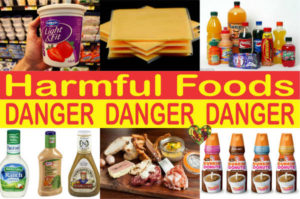
References
- Regul Toxicol Pharmacol. 2001 Feb;33(1):66-79. Safety evaluation of dietary aluminum. Soni MG1, White SM, Flamm WG, Burdock GA. [↩]
- Br J Ind Med. 1989 Jan; 46(1): 60–62. Occupational asthma after exposure to azodicarbonamide: report of four cases. J C Normand, F Grange, C Hernandez, A Ganay, P Davezies, A Bergeret, and G Prost. [↩]
- Scientific America: BHA and BHT: A Case for Fresh? [↩]
- Should I be worried that my favorite soda contains brominated vegetable oil? Answer From Katherine Zeratsky, R.D., L.D. [↩]
- What is BTHQ, BHT & BHA? –Food-Safe (Just Ask the FDA) [↩]
- EFSA: Scientific Opinion on the re-evaluation of carnauba wax (E 903) as a food additive. Carnauba wax, INS No. 903, CAS Registry Number 8015-86-9, EINECS 232-399-0. First published in the EFSA Journal: 4 October 2012. [↩]
- Environ Health Perspect. 2001 Oct; 109(10): 983–994. Review of harmful gastrointestinal effects of carrageenan in animal experiments. J K Tobacman. [↩]
- Int J Environ Res Public Health. 2017 Mar; 14(3): 329. Efficacy and Safety Evaluation of a Chlorine Dioxide Solution. Jui-Wen Ma, Bin-Syuan Huang, Chu-Wei Hsu, Chun-Wei Peng, Ming-Long Cheng Jung-Yie Kao, Tzong-Der Way, Hao-Chang Yin, Shan-Shue Wang. [↩]
- Lysine, disodium guanylate and disodium inosinate as flavor enhancers in low-sodium fermented sausages. Paulo Cezar, Bastianello Campagnol, Bibiana Alves dos Santos, Nelcindo, Nascimento Terra, Marise Aparecida Rodrigues Pollonio. [↩]
- J Nutr. 2011 May; 141(5): 1011S–1022S. Putting the Whole Grain Puzzle Together: Health Benefits Associated with Whole Grains—Summary of American Society for Nutrition 2010 Satellite Symposium. Satya S. Jonnalagadda, Lisa Harnack, Rui Hai Liu, Nicola McKeown, Chris Seal, Simin Liu, and George C. Fahey. [↩]
- Contact Dermatitis. 2015 Feb;72(2):121-3. doi: 10.1111/cod.12324. Epub 2014 Dec 18. Contact allergy caused by Tinosorb® M: let us not forget about xanthan gum. Aerts O1, Clinck B, Schramme M, Lambert J. [↩]
- J Allergy. 1947 May;18(3):214. Allergy (asthma) to ingested gum tragacanth; a case report. BROWN EB, CREPEA SB. PMID: 20296003. [↩]
- International Journal of Food Properties. Volume 20, 2017. Issue Sup2. Monosodium glutamate: Review on clinical reports. Zehra Kazmi, Iffat Fatima, Shaghufta Perveen & Saima Shakil Malik [↩]
- J Nutr. 1997 Aug;127(8 Suppl):1719S-1728S. doi: 10.1093/jn/127.8.1719S. Assessment of the nutritional effects of olestra, a nonabsorbed fat replacement: summary. Peters JC, Lawson KD, Middleton SJ, Triebwasser KC. [↩]
- EFSA: EFSA advises on the safety of paraben usage in food [↩]
- EFSA: Scientific Opinion on the re-evaluation of polyoxyethylene sorbitan monolaurate (E 432), polyoxyethylene sorbitan monooleate (E 433), polyoxyethylene sorbitan monopalmitate (E 434), polyoxyethylene sorbitan monostearate (E 435) and polyoxyethylene sorbitan tristearate (E 436) as food additives. EFSA Panel on Food Additives and Nutrient Sources added to Food (ANS). European Food Safety Authority (EFSA), Parma, Italy. [↩]
- Environ Health Perspect. 1990 Jul; 87: 309–335. Toxicity and carcinogenicity of potassium bromate–a new renal carcinogen. Y Kurokawa, A Maekawa, M Takahashi, and Y Hayashi [↩]
- EFSA confirms safe levels for nitrites and nitrates added to food [↩]
- Drug Chem Toxicol. 2014 Jul;37(3):241-6. doi: 10.3109/01480545.2013.838776. Epub 2013 Oct 25. Geno- and cytotoxicity of propyl gallate food additive. Hamishehkar H, Khani S, Kashanian S, Ezzati Nazhad Dolatabadi J, Eskandani M. [↩]
- Science Direct: Propylene glycol [↩]
- American Cancer Society: Recombinant Bovine Growth Hormone [↩]
- Toxicol Rep. 2016; 3: 636–643. Evaluation of the deleterious health effects of consumption of repeatedly heated vegetable oil. Rekhadevi Perumalla Venkata and Rajagopal Subramanyam. [↩]
- Gastroenterol Hepatol Bed Bench. 2012 Winter; 5(1): 16–23. Adverse reactions to the sulphite additives. Hassan Vally and Neil LA Misso [↩]
- Mol Genet Metab. 2015 Jan; 114(1): 73–79. Effects of sodium benzoate, a widely used food preservative, on glucose homeostasis and metabolic profiles in humans. Belinda Lennerz, Scott B. Vafai, Nigel F. Delaney, Clary B. Clish, Amy A. Deik, Kerry A. Pierce, David S. Ludwig, and Vamsi K. Mootha. [↩]
- Int J Biol Macromol. 2016 Nov;92:965-971. doi: 10.1016/j.ijbiomac.2016.08.012. Epub 2016 Aug 6. Toxicity study of food-grade carboxymethyl cellulose synthesized from maize husk in Swiss albino mice. Mondal MI, Yeasmin MS. [↩]
- PLoS One. 2017; 12(6): e0178426. The artificial sweetener acesulfame potassium affects the gut microbiome and body weight gain in CD-1 mice. Xiaoming Bian, Liang Chi, Bei Gao, Pengcheng Tu, Hongyu Ru, and Kun Lu. [↩]
- J Med Food. 2014 Sep;17(9):1017-21. doi: 10.1089/jmf.2013.0162. Effects of agave nectar versus sucrose on weight gain, adiposity, blood glucose, insulin, and lipid responses in mice. Hooshmand S, Holloway B, Nemoseck T, Cole S, Petrisko Y, Hong MY, Kern M. [↩]
- NHS: The truth about aspartame [↩]
- WHO: Residue Monograph prepared by the meeting of the Joint FAO/WHO Expert Committee on Food Additives (JECFA), 82nd meeting 2016. Bleached Starch. [↩]
- Journalist’s Resource: High-fructose corn syrup and your health: Research roundup [↩]
- Science Direct: Saccharin is an organic petroleum-based compound, chemical name 1,2-benzisothiazolin-3-1 −1,l- dioxide (C7H5NO3S), 200 to 700 times sweeter than sucrose. [↩]
- J Toxicol Environ Health B Crit Rev. 2013;16(7):399-451. Sucralose, a synthetic organochlorine sweetener: overview of biological issues.
Schiffman SS1, Rother KI. [↩] - Food Chem. 2014 Jun 15;153:315-20. Cytotoxicity and DNA damage properties of tert-butylhydroquinone (TBHQ) food additive. Eskandani M, Hamishehkar H, Ezzati Nazhad Dolatabadi J. [↩]
- Researchgate: An Evidence-Based Systematic Review of Annatto ( Bixa orellana L.) by the Natural Standard Research Collaboration Article · Literature Review (PDF Available) in Journal of Dietary Supplements 9(1):57-77 · March 2012. [↩]
- Researchgate: Analysis of Bixin in Foods [↩]
- Food Chem Toxicol. 2003 Aug;41(8):1157-64. A thirteen-week oral toxicity study of annatto extract (norbixin), a natural food color extracted from the seed coat of annatto (Bixa orellana L.), in Sprague-Dawley rats. Hagiwara A, Imai N, Ichihara T, Sano M, Tamano S, Aoki H, Yasuhara K, Koda T, Nakamura M, Shirai T. [↩]
- Scientific American: Where does blue food dye come from? The same colorants that are in your blue jeans may also be in your M&Ms [↩] [↩]
- EFSA: Scientific Opinion on the re-evaluation of Brown HT (E 155) as a food additive [↩]
- Food Chem Toxicol. 1992 Sep;30(9):749-57. Effects of the colour additive caramel colour III on the immune system: a study with human volunteers. Houben GF, Abma PM, van den Berg H, van Dokkum W, van Loveren H, Penninks AH, Seinen W, Spanhaak S, Vos JG, Ockhuizen T. [↩]
- Int J Occup Environ Health. 2012 Jul-Sep;18(3):220-46. Toxicology of food dyes. Kobylewski S, Jacobson MF. [↩] [↩] [↩]
- PubChem Open Chemistry Database: Fast Green. [↩]
- Toxnet: Citrus Red 2 [↩]
- International Journal of Occupational and Environmental Health, Volume 18, 2012 – Issue 3. Toxicology of food dyes. Sarah Kobylewski & Michael F. Jacobson. Pages 220-246 | Published online: 12 Nov 2013. [↩]
- Environ Health Perspect. 2010 Oct; 118(10): A428. DIET AND NUTRITION: The Artificial Food Dye Blues. Carol Potera. [↩] [↩] [↩]
- Braz J Biol. 2007 Feb;67(1):141-5. Prolonged use of the food dye tartrazine (FD&C yellow no 5) and its effects on the gastric mucosa of Wistar rats. Moutinho IL1, Bertges LC, Assis RV. [↩]
- Environ Health Perspect. 1982 Nov; 45: 209–210. Condensations of the Carcinogenesis Bioassay Technical Reports FD&C Yellow No. 6. [↩]
- MPH Programs List: 50 Jawdroppingly Toxic Food Ingredients & Artificial Additives to Avoid [↩]
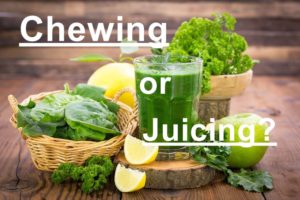
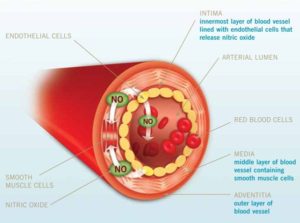 When we eat vegetables “…[w]hat you are doing is you are bathing that cauldron of oxidation inflammation all day long with nature’s most powerful anti-oxidant” – nitric oxide, produced by the endothelial cells within our blood vessels. And it is the green leafy vegetables that he considers to be our best source of nitric oxide-producing foods.
When we eat vegetables “…[w]hat you are doing is you are bathing that cauldron of oxidation inflammation all day long with nature’s most powerful anti-oxidant” – nitric oxide, produced by the endothelial cells within our blood vessels. And it is the green leafy vegetables that he considers to be our best source of nitric oxide-producing foods.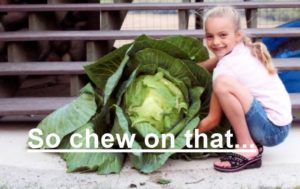
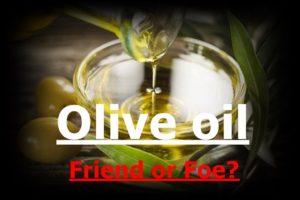
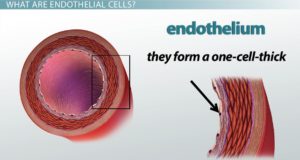 The endothelial cell layer is a one-cell thick layer within the inner surface of our blood vessels. These cells are of vital importance for vascular health and their damage is what leads to the development of CVD (cardiovascular disease).
The endothelial cell layer is a one-cell thick layer within the inner surface of our blood vessels. These cells are of vital importance for vascular health and their damage is what leads to the development of CVD (cardiovascular disease).